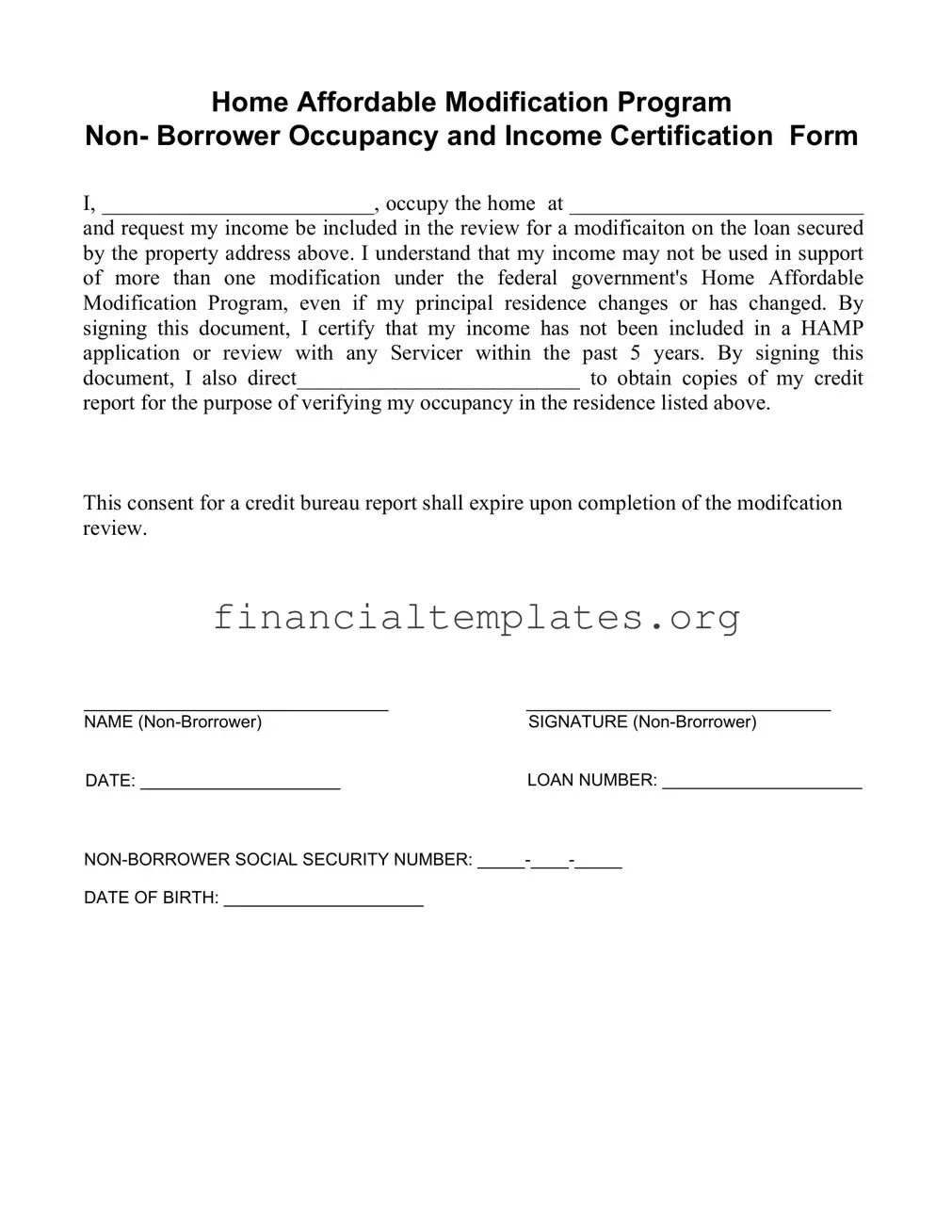The Forbearance Agreement is one document that shares similarities with the Loan Modification Form. Both documents are created with the intent of assisting borrowers facing financial difficulties, albeit through different means. While a Loan Modification Form aims to alter the terms of the current mortgage to reduce the borrower's monthly payments, a Forbearance Agreement temporarily suspends or reduces payments for a short period. Each document requires the borrower to provide specific financial information to evaluate their current situation, though the Loan Modification Form specifically involves altering loan terms, whereas a Forbearance Agreement focuses on a temporary relief solution.
Affidavit of Financial Hardship is another document bearing resemblance to the Loan Modification Form. Individuals complete this affidavit to demonstrate their financial difficulties to a lender or court to seek relief or assistance, similar to how one would request a change in loan terms due to financial constraints through the Loan Modification Form. Both documents necessitate detailed personal financial information to assess the requester’s financial situation, aiming to provide proof of hardship that justifies the need for assistance, either through loan modification or other legal relief efforts.
The Refinance Application is similar to the Loan Modification Form as both involve adjusting the terms of an existing mortgage. However, the Refinance Application is used to obtain a new loan with different terms to replace the original mortgage, which can result in a lower interest rate or different loan duration. Despite this difference, both documents share the objective of making mortgage payments more manageable for the borrower, and they each require the borrower to provide comprehensive financial information to determine eligibility.
Deed in Lieu of Foreclosure Agreement shares a common goal with the Loan Modification Form: to avoid foreclosure. When a borrower can no longer make mortgage payments, a Deed in Lieu of Foreclosure can be an alternative to foreclosure, where the borrower voluntarily transfers the property title to the lender. Like the Loan Modification Form, this agreement is a potential solution for borrowers in distress, though the outcomes differ significantly—one modifies the loan terms to retain the home, while the other involves surrendering the property to the lender.
The Home Affordable Refinance Program (HARP) Application is akin to the Loan Modification Form as both seek to provide relief to homeowners struggling with their mortgage payments. The HARP program was specifically designed to enable homeowners, who are underwater on their mortgages, to refinance their homes at lower interest rates, similar to how a Loan Modification Form could adjust the terms of a loan to reduce monthly payments. Each document serves the purpose of assisting borrowers in financial distress, though through slightly different means: refinancing versus modifying the existing loan terms.
Credit Report Authorization Form is closely related to the Loan Modification Form, particularly in the section where the latter authorizes credit report checks to verify occupancy or income as part of the modification review process. Both documents involve consenting to a credit inquiry, which is crucial for lenders to assess the borrower's financial health and risk before making a decision. While the primary purpose of a Credit Report Authorization Form is to obtain a borrower's credit information for various reasons, it plays a critical role in the loan modification process as well.
Income Verification Form is similar to segments of the Loan Modification Form, especially where income documentation is required to substantiate the borrower's request for loan modification due to financial hardship. Both forms require detailed proof of the borrower's income to assess their ability to meet modified loan terms. The key goal is to ensure that the borrower's income is sufficient to support the new, adjusted payment arrangements, thus preventing future defaults.
